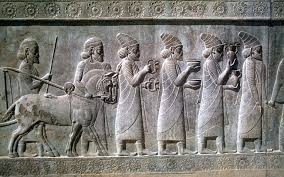Managing a Vast Empire
The Achaemenid Empire, founded by Cyrus the Great in the 6th century BCE, was one of the largest empires in ancient history. Stretching from the Indus Valley to the Mediterranean, it encompassed diverse cultures, languages, and landscapes. To maintain control over such a vast territory, the Persians developed an innovative administrative system centered on satraps provincial governors who acted as the king’s representatives.
Structure and Responsibilities of Satraps
Satraps were assigned to specific regions, known as satrapies, where they oversaw local governance, tax collection, and security. They acted as intermediaries between the central government and regional populations, balancing imperial authority with local autonomy. While satraps had considerable power, their actions were monitored by royal inspectors to prevent rebellion and corruption, ensuring loyalty to the emperor.
Balancing Local and Central Power
The satrap system allowed the empire to function efficiently despite its size. Satraps maintained local customs and laws while enforcing imperial policies. This flexibility helped integrate diverse peoples into the empire, fostering economic stability and cultural exchange. Additionally, satraps commanded local armies, providing defense and maintaining internal order.
Economic and Political Significance
Satraps played a key role in the empire’s wealth and stability. They collected taxes, managed trade routes, and ensured that resources reached the central treasury. By delegating authority while maintaining oversight, the Persian kings could govern effectively without micromanaging distant provinces. This system became a model for future empires in terms of combining local governance with centralized control.
Conclusion
The use of satraps illustrates the ingenuity of the Achaemenid Empire in managing a vast and diverse territory. By delegating power while maintaining accountability, the Persians created a system that balanced authority, stability, and cultural integration a model of governance that influenced subsequent empires for centuries.






